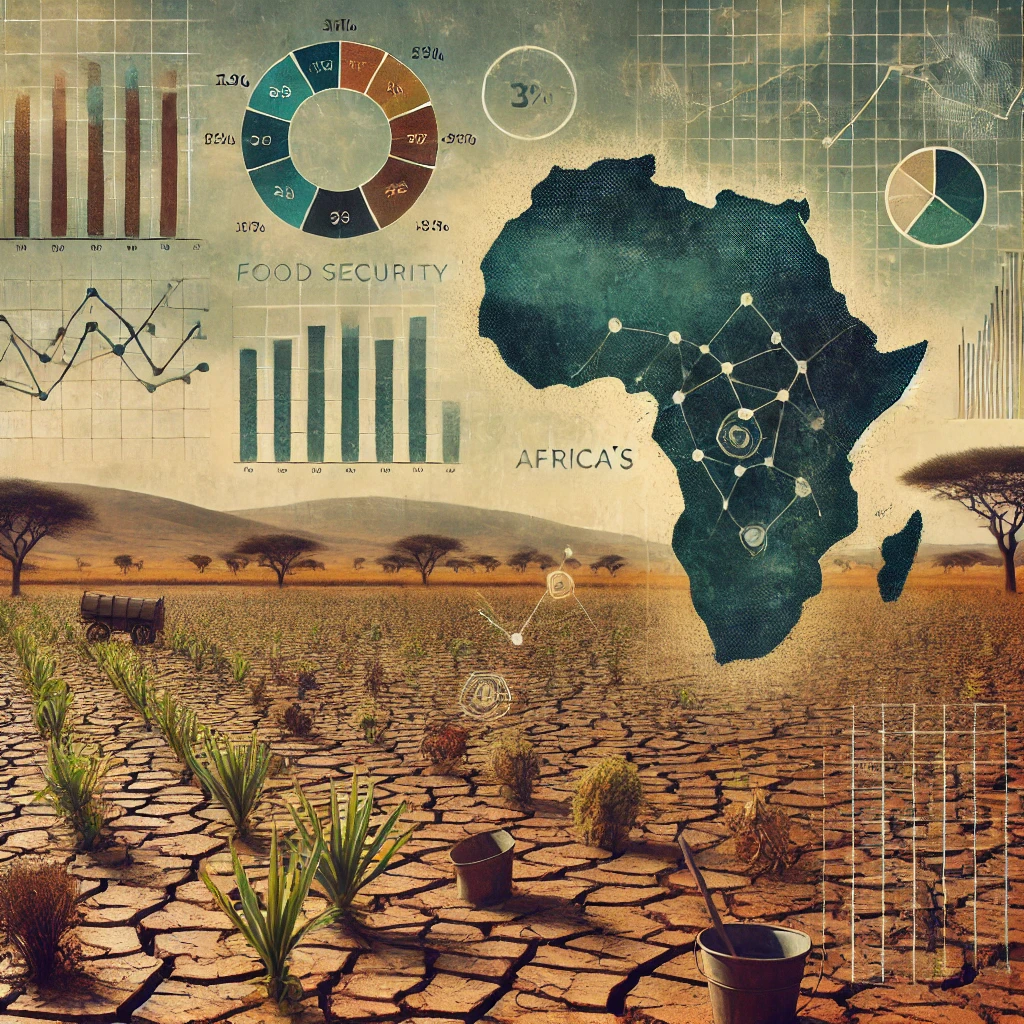Physical Address
304 North Cardinal St.
Dorchester Center, MA 02124
Physical Address
304 North Cardinal St.
Dorchester Center, MA 02124

Africa stands as the second-largest continent both in terms of landmass and population. Yet, when it comes to global food production, it ranks a distant fifth. This paradox becomes even more striking when compared to Asia, the largest continent in terms of landmass and population, which has harnessed its resources to dominate global food production.
To better understand the underlying factors that shape the food security landscape, we must delve into relevant data, comparing continents across critical metrics such as landmass, population, and food production. Let’s explore the numbers and identify how these factors influence food production efficiency.
The distribution of land and people across the world’s continents is critical to understanding the pressures on food production systems. Below is a breakdown of each continent by landmass, population, and the average amount of land available per person:

From this table, we can observe that Africa’s land-to-person ratio is 0.0208 km² per individual, which is significantly higher than that of Asia (0.0094 km² per person) and Europe (0.0136 km² per person). Despite having more land per person, Africa’s food production remains low compared to these regions. North America and South America, with much lower population densities, have higher ratios of land per person and more efficient food production systems.
Each continent faces unique challenges and opportunities for food production, influenced by factors such as climate, infrastructure, technology, and political stability. Here’s how these factors play out:
Asia, despite having the smallest land per person, is the global leader in food production. Its success is largely due to investments in high-efficiency agricultural practices, particularly in countries like China and India. The continent has embraced technologies such as high-yield crop varieties, irrigation systems, and mechanization to optimize output. In addition, Asia has well-developed infrastructure that ensures better distribution of food, reducing post-harvest losses.
However, the large population exerts immense pressure on agricultural systems, and parts of Asia, especially South and Southeast Asia, still face significant food insecurity due to income inequality and fragmented landholdings.
Africa has vast arable land and a relatively low population density compared to Asia. However, several factors hinder its food production potential:
Despite these challenges, Africa has enormous potential if it can invest in climate-smart agriculture, improve infrastructure, and address political issues.
North America, particularly the United States and Canada, benefits from vast fertile plains, advanced technology, and well-established agricultural infrastructure. The use of large-scale mechanization, genetically modified crops, and modern irrigation systems makes North America one of the most efficient food producers in the world. The continent also has excellent food distribution networks, reducing post-harvest losses and ensuring food security for its population.
However, North America’s reliance on industrial agriculture comes with environmental costs, including soil degradation and water scarcity in certain regions.
South America is becoming a key player in global food production, with countries like Brazil and Argentina emerging as major exporters of soybeans, corn, and beef. The continent’s fertile soils and favorable climate give it a comparative advantage. However, deforestation in the Amazon, driven by the expansion of agricultural land, threatens biodiversity and contributes to climate change, which could undermine future productivity.
South America has the land and resources to continue growing as a food exporter, but it needs to balance agricultural expansion with environmental conservation.
Europe’s agricultural sector is characterized by high productivity, despite limited land availability. This is due to the extensive use of technology, subsidies from the European Union, and a well-developed market infrastructure. Europe also focuses on sustainable agriculture, with policies promoting organic farming, biodiversity, and reduced chemical usage.
However, Europe’s aging population and declining interest in farming among younger generations could pose challenges to long-term food production.
Oceania, particularly Australia and New Zealand, has a large land-to-person ratio, but much of the land is arid or semi-arid, limiting its agricultural potential. Despite this, Oceania is a significant exporter of meat, dairy, and grains, thanks to its highly mechanized and efficient farming practices. Water scarcity and climate change are major challenges, particularly for Australia.
The global landscape of food security is shaped by a range of factors, from land availability and population density to infrastructure, technology, and climate. While Asia has leveraged its population and technology to become the top food producer, Africa, despite its vast land, struggles with inefficiencies that undermine its potential.
To achieve food security, Africa and other regions facing similar challenges must invest in innovative agricultural practices, modernize infrastructure, and address the socio-political issues that hinder productivity. As the world’s population continues to grow, improving food production efficiency across all continents will be critical for ensuring a stable and sustainable future.
7cghxn
ac1plm
6am1i7